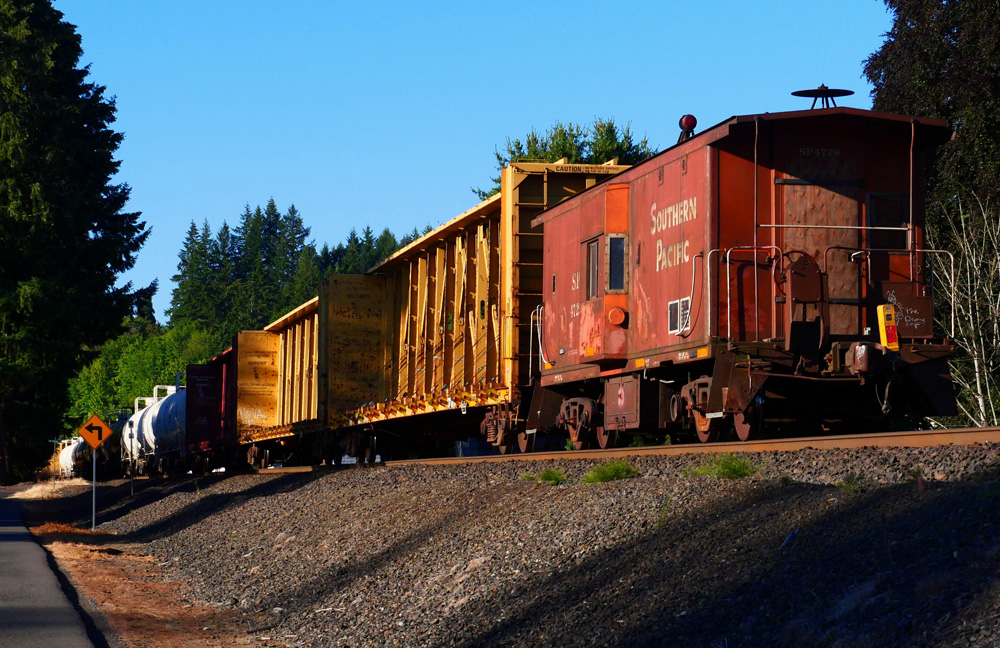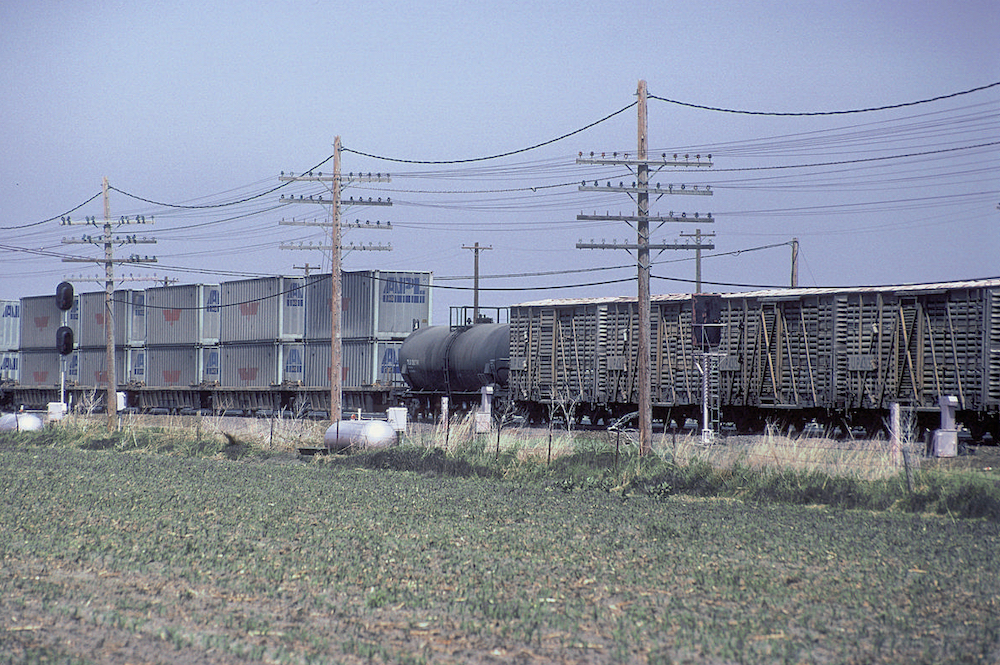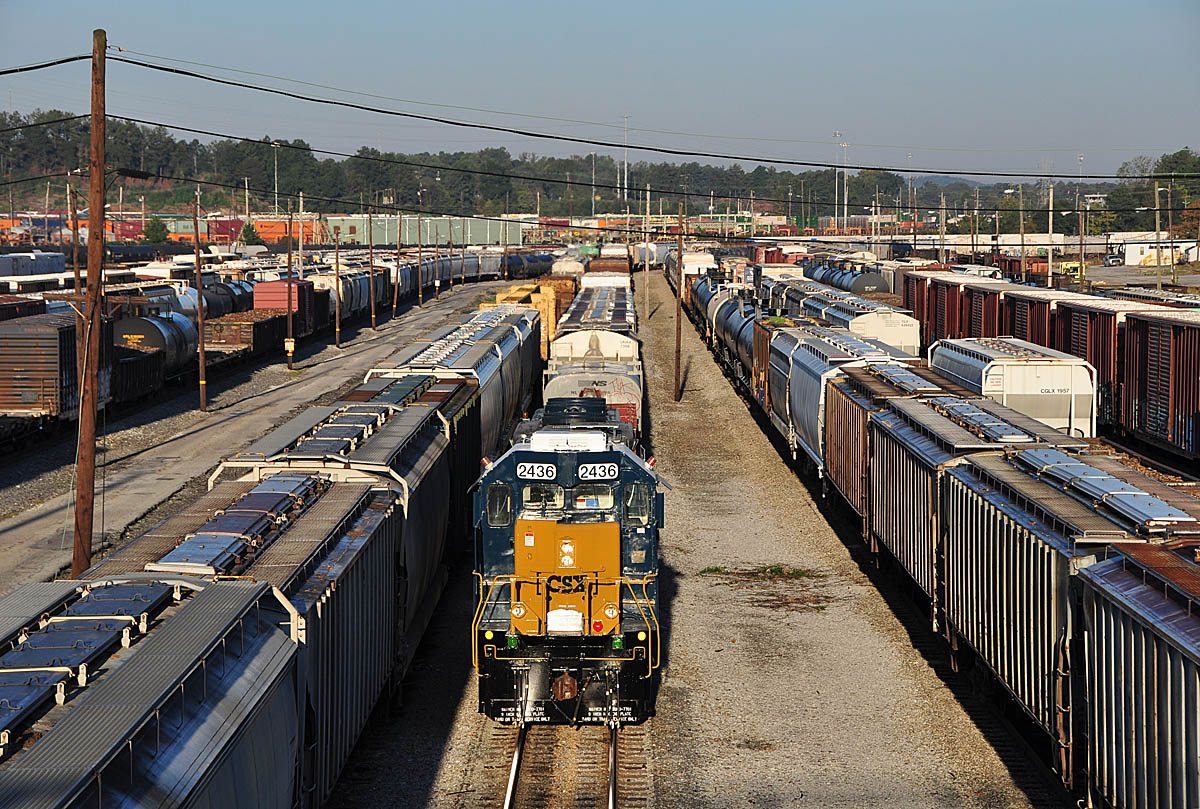Cabooses

It’s been roughly 40 years since cabooses were a regular occurrence on the end of any mainline train. Cabooses were a critical part of railroad operations, coordination, and logistics.
Since the beginning of railroads in the 1830s, train crews would routinely work from one end of the train to another via roof walks and ladders. The caboose was always at the end. It was a sheltered area that allowed the crew to stay out of the elements when not immediately tending to their jobs on the train. As needs evolved and the design was refined, the caboose became the rolling office for the train conductor.
What you might not realize however, is the significance of this small car and how technology has replaced the need for it over the years.
No. 1: Rolling office and dorm
Each caboose provided not only shelter for the crews but a place for documentation and paperwork to be completed by a trainman or conductor. A caboose carried marker lights that would show it as the end of a train while alerting other trains of its location. Some cabooses were adorned with bunks, a stove, and in some cases, a small bathroom.
No. 2: Specifically assigned
Some railroads assigned cabooses to specific conductors and crews. Assigned crews would sometimes use the caboose to lay over between runs, as it would be set out and reserved for the crew to take back on a returning train. Those assigned to a particular crew would occasionally be personalized with pictures, posters, or cartoons on the wall, essentially making the caboose a “rolling” home away from home for these individuals.
No. 3: Used as a toolbox
Each caboose was outfitted with various tools and equipment for use while on the line. This was in case of a mechanical breakdown or other issues while en route. A collection of basic tools and wrenches would be located inside a supply cabinet, as well as fuses, air hoses, and coupler knuckles. A red flag was always present to be used by a crewman of a stopped train. It was used to alert an approaching, unaware train that another train was stopped ahead.
No. 4: Designed based on railroad
Cabooses were built and painted with different designs dictated by the purchasing railroad. Some chose a caboose with a high cupola that allowed the crews to be seated in the upper region of the caboose. This gave them good visibility when inspecting the train from the rear. Some railroads chose bay window-style cabooses with no upper-level area, while others chose “transfer” cabooses that provided more protection to the crew during movements between yards, rather than over-the-road trains.
No. 5: More of a novelty
The main use for the caboose started to wane in the 1980s. Most mainline cabooses were not in use by the 1990s because of new technology and crew reductions. In some rare cases, a caboose will still be used as a “switching platform” that allows a safe place for crew members to ride while switching or riding cars for a long distance. However, their distribution across the U.S. and Canada is very limited, with some short lines or specialized work equipment still utilizing them.














UP could & should use cabooses again in the LA area where the gangs have stolen how many millions in goods. They need multiple cabooses with multiple security guards. It would cost less to protect the cargo from being stolen then those losses that went into the millions.
Most dangerous location on a train, account slack action, or getting on or off with a grip, or improper placement in trains, or derailments. Four specific broken-bone injuries to employees in my tenure, and another that broke a manager’s career.
I’d be surprised if there is a single operating manager who ‘reveres’ cabooses [or cabins, or waycars, or crummies, or …].
My wife and I owned the D&RGW 01521 for several years and actually got to ride in it several times. Ours was really a home away from with bunks and toilet. It was insulated so it was warm in winter but bit hot in the summer. We sold it when we were transferred east. It’s now a “Man Cave” now fully restored to the classic D&RGW paint scheme.
I started railroading after cabooses were long gone but I can understand why they were so well liked except for ,as I was told, the risk injury from slack action.
No.3
Rear brakeman used a flagging kit when protecting against following trains.
A metal round container holding a red flag, red fusees as well as torpedoes.
A lit fusee would be tossed off rear of caboose as soon as airbrakes went into emergency. Engineer would give whistle signal for flag protection to be done. Once stopped flagman would run back required distance to place two fusees on opposite rails to ensure explosion would take place. He would continue farther until required distance reached and stand on track between rails watching for approaching train and give the “washout” emergency signal repeating it until approaching engineer acknowledged with two short whistle blasts. Step aside.
Hi Ray. Thanks for your comment. I just got out my well-marked up and used copy of the Uniform Code of Operating Rules Revision of 1962 to check out UCOR Rule 99 for flagging. (It’s been a long time…) The rear brakeman when signaled to flag by the engineer would go back from the caboose the required distance from 1000 and 2000 yards depending on the view to the rear end of the train and the grade. When at the required distance he would place the 1st set of 2 torpedoes (one on each rail opposite the other) and then place a 2nd set of torpedoes in the same manner not more than 100 yards nor less than 50 yards from the required distance apart to cause 2 separate explosions. He would assume his flagging position at the required distance and flag the oncoming train as you have described with either a red flag or red fusee. The head end brakeman would protect the head end of the train in a similar manner.
Love the article. I always enjoy articles about the caboose. But, I’ve always had a question. I’ve noticed that when there are articles about the caboose in any of the Trains related publications, you use “cabooses” as the plural. I am just wondering, is that the correct plural for caboose? I only ask because my grandfather, who worked on the railroad riding the trains, talked about them, he always called them “cabeese” when he talked about more than one. I am just wondering if either one is actually the “correct” name? Or is it just a regional word? Or what?
Just curious.